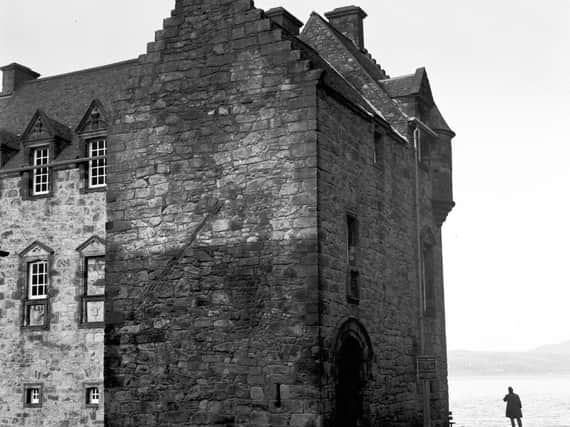400-year-old case of domestic abuse highlighted at Scottish castle


Now, the story of Lady Margaret Crawford finds no hiding place as Historic Environment Scotland puts in full view the horrors of home she endured.
Lady Margaret Crawford lived with her husband, Sir Patrick Maxwell, at Newark Castle in Port Glasgow in the 17th Century with HES now telling her story in a new guide for visitors.
Advertisement
Hide AdAdvertisement
Hide AdMegan Gordon of Scottish Women's Aid helped to research Lady Margaret's story for the organisation.
A testimony by Lady Margaret given in 1636 details an occasion while Sir Patrick lashed out at her during supper before she was carried away to her chamber.
The testimony said: "The compleaner, being sitting with him at supper in the place of Neuwarke…he, without anie cause of offence done be her to him in word or deid…strake [her] with his faldit neiffes [fists] upon the face, to the effusion of her blood and hazard of her lyffe, [then] she was carried to her chamber…and was keeped without comeing in public for the space of halfe ane yeere.”
The account was given to the Privy Council after Sir Patrick's own mother raised a complaint about his conduct.
On another occasion, Lady Margaret was attacked with a sword.
Ms Gordon, in an article for Historic Environment Scotland, said: "The records tell us that Margaret suffered domestic abuse from her “unnatural and unkynde husband”.
"For Margaret then, as for women today, the abuse is often persistent, and can take many forms."
Ms Gordon said that Sir Patrick was "shockingly violent" towards his wife, the mother of his 16 children.
Advertisement
Hide AdAdvertisement
Hide AdShe said: "Patrick would berate Margaret and put her down, even in front of guests. He was unkind, spewing scornful rants at her – the mother of his sixteen children. He would lock her in her bedchamber, depriving her of contact with the outside world.
"He controlled what she ate and drank – “nothing bot half ane oat loaffe and some small drinke” each day.
"This constant wearing someone down and the need to control everything from their eating to their public interactions is something we still see today. Indeed, women have told us for decades that this type of controlling abuse is the most difficult to recover from."
Sir Patrick's violent streak was well known with his reputation notorious, even by 17th Century standards.
A good friend of King James VI, he is known to have murdered members of rival families, including two of the Montgomery of Skelmorlies in a single day.
Lady Margaret managed to escape in 1636 to Dumbarton, where she remained for the rest of her days “comfortless and moyenles [without means]".
Sir Patrick was deemed too old and ill to travel at the time and, as a result, was never brought to answer to the charges against him.
Ms Gordon added: "Similarly, many women today live without ever seeing justice for the abuse carried out against them.
"However, this is one area we have made some progress."
Advertisement
Hide AdAdvertisement
Hide AdFrom April 2019, Scotland introduced a "world-leading law" which criminalises coercive and controlling behaviour, Ms Gordon said.
She added: "We’re in the early days of implementing this new law in Scotland. But already we’re seeing increased demand for Women’s Aid services as more awareness is raised about coercive control.
"So, the picture is changing and we’re thankful for that, but the work is not done. There are still lots of myths and misconceptions around domestic abuse and other gender based violence. We also need to improve the ways women can access housing, specialist services and the justice system. At Scottish Women’s Aid, we’re working for a future with no domestic abuse.
"We owe it to Margaret Crawford – and the hundreds of thousands of women who have experienced the same since – to keep working to make that vision a reality."
- A full version of Ms Gordon's original article can be found on the Historic Environment Scotland blog.
Comments
Want to join the conversation? Please or to comment on this article.